#reconcer
Explore tagged Tumblr posts
Text
Vivre l’amour
L’amour est un simple mot. Il est aussi ce que le cœur lui donne. Il est en soi le véhicule qui peut transporter une vie vers des gens et des lieux merveilleux, il peut aussi devenir une sorte de prison sur roues pour la personne qui n’est pas capable de sortir de soi et qui cherche à tout posséder. La première vertu de l’amour est l’acceptation de l’autre tel qu’il est, peu importe la forme de…

View On WordPress
0 notes
Text
mi mamá se cruzó con la madre de mi mejor amiga de la secundaria y la señora todavia se acuerda de mí por nombre y apellido 💀
#it's been 8 years 💀#mi mamá le dijo que era mi mamá tipo con mi nombre y la doña tipo '????? [APELLIDO REDACTADO] ????? tanto tiempo'#andjakdkakdkaksk bastaaaaaaaaaa voy a ser [redacted] forever#mi apellido es mas reconcible que mi nombre igual#no es un apellido muy usado. y also es apellido de un jugador de futbol so
2 notes
·
View notes
Text
Okay, hold up, you know what? Since I’m at it, I also want to talk about the other big Elden Ring twt fandom discourse that makes absolutely zero sense in the context of the game other than the Good/Evil Miquella/Mohg debate, and that’s the Miquella x Radahn debate da da dummm
I want to preface by saying this is neither an anti nor pro miq/rad ship post. On the contrary, it’s a “it doesn’t even make sense to argue about it at all” post
Every time I see discourse or infighting about this topic (and there’s been a lot. Whole twt communities have cannibalized each other over it), I’m again floored that people think it warrants a debate. Like, genuinely and sincerely perplexed, and this is why:
The basis for the discourse relies on the premise that romantic and familial relationships, sex, and societal expectations in the Lands Between, necessarily mirror those things in reality. And…that entire premise is just…completely flawed and has been emphatically disproven by the source material.
Hot take, but I’m actually hard-pressed to believe that the act of sex even exists in the universe.
Here’s what the game tells us. It asserts that romantic love exists through the tale of Radagon and Rennala. It asserts that marriage exists, and that through marital union, children are conceived. This is where the similarities to reality ends. If we only had these facts to go on, the assumption that the mechanics mirror reality would be a reasonable one to make. But then the game goes all over the place and completely overturns our presumptions.
Let’s see, we have marital union that conceives children. Good. Okay, but also marital union between two selves in one body that conceives children… Oh, and also the conception of children that does not come from marital union at all, rather from the rotted battlefields of war between a brother and sister. Hm. We have a woman who sleeps with the dead, but “sleeping with” might not mean sex, oh, and she can also have a union with a corpse in game that conceives a child. Oh, but she also needs you and a bunch of other people to help conceive the child, which can later be placed over/in(?) the womb(?) of its grandmother/grandfather’s combined body, which then reconceives its father.
Can you see where I’m going with this? Depending on what angle you look at the game from, you could say it’s fraught with incest, selfcest, and necrophilia (also whatever the fuck is going on with Count Ymir). But this interpretation lacks soooo much nuance.
The thing of it is that we just don’t know how the demigods work. We don’t know the how, why, or even the if they have sexual relationships with each other in the way we’re familiar with. Your personal interpretation can be whatever you want and you literally cannot be proven wrong (or right!).
So why the hell do entire friendships get broken over whether you think twinkella wanted his brother’s gravity sword? Who knows? Who cares? You can headcanon anything you want.
People being morally performative over it is also just completely bizarre for the same reason. The relationship dynamics are between fictional gods, they literally and physically cannot be held to the same real life morals as you and I. The whole entire thing is the biggest nothingburger discourse of the fandom, and I bet the devs spent no more than five seconds considering that western fandom might be sending death threats over whether or not you like a little spice in your cosmic-god-rot-infested-golden-soup
#I’m sorry if these tags aren’t appropriate I’m not trying to bring negativity to fans and I’m new to this#fandom critical#Elden Ring#Miquella#promised consort radahn#fandom discourse#elden ring fandom#Elden Ring fandom discourse
18 notes
·
View notes
Text
A little, not very polished ramble on Fukuchi and political theory, initially meant to be the answer to an ask questioning what I thought of the last chapter but posting separately because it ended up having little to do with the actual chapter.
This arc is good. I mean, the politics dilemmas it tackles are real and relevant (or maybe it's just me and loving politics discussion, that's a real chance too). Themes and interrogatives such as whether the eradication of states is possible; the critic to democracy in favour of a single authoritarian leader as the optimal solution for citizens' wellbeing; the utilitarian reasoning behind the justification of sacrificing a few in order to ensure the greatest good to the most; the trolley problem– would you be willing to sacrifice five hundred in order to save two-hundred and ten million; the general interrogatives on why war happens; those are all real questions that political scientists try to give an answer to. I feel like bsd still hasn't cleared up where it stands in relation to these interrogatives– a lot of it is going to be determined on what Fukuzawa is going to do with his role of Army of Mankind's leader, whether he's going to accept it or something else. But I'm EXTREMELY curious to find out how the author will answer them and the worldview bsd is going to propose accordingly.
So far, bsd has seemed to me to propose a nihilistic-political realist-nationalist worldview: good and evil are meaningless binomials (Oda in his last speech to Dazai), every man acts in their own interest and the strongest prevails (Teruko in chapter 76), a strong sentiment of pride for own country that often translates in denigration of foreigners (the way all characters from other countries are villains, a somewhat reverence for military police (though other people have interpreted it being exactly the opposite))¹. Such reading of bsd is reinforced by Fukuchi's speech in chapter 85, with Fukuchi's character being made overall unsympathetic to the reader. At that point, I was like “Ah! Of course! The nationalist-realist manga makes of the anarchist an unsympathetic terrorist!” (and I'm quite confident I'm not misinterpreting by saying he was framed unsympathetically, at least as far as his ideals go. A lot of emphasis is put on his role of torturer, and the story protagonist looks very upset by it, which feels like inducing the reader to be as well).
But perhaps I was mistaken? Maybe I really jumped to the conclusion by believing this arc would have turned in an anti-anarchism morale. And even though it's still too soon to say it won't, in the arc conclusion we saw so far anarchism was at least framed in much more favourable lenses. Episode 5x11 and the last chapters have vastly subverted the lenses the reader is called to see Fukuchi under, and it's been SO interesting to see. Because Fukuchi isn't made unsympathetic, and as consequence his anarchist ideals aren't being framed as the senseless ravings of the villain anymore. Which I didn't see coming, and was pleasantly surprised by!! Fukuchi's desire to stop war by erasing all states, if not feasible, is now at least being framed as sensate and even noble; which is quite silly given that it's the same ideals he was carrying on in chapter 85, just with more details on political theory and positive lenses. Moreover, the world integration and creation of a single-state is framed as being a natural and unavoidable progression of history, which is CRAZY to me. I mean, it's crazy because it wholly contradicts the nationalist worldviews I found previously quite solidly established in this manga (which, again, might be just a big misreading on my side but. Wow.). Double crazy because there's about one million political scientists who would disagree with it… I don't think it's that much of an affirmed theory anywhere? If anything, because it's got some pretty strong historical negations: I'd like to ask Fukuchi how the gradual disgregation of states reconciles with the dissolution of the ussr and the objective difficulty to maintain wide pieces of land unified, the equally objective difficulty to concretize the goal of European integration, the new wave of nationalism in the world and new countries actively seeking independence rather than cohesion. In the end, Fukuchi seems to propose this insane hybrid of anarchism and authoritarianism with the negation of all states and a single leader detaining all the power (aka no separation of powers, the most rudimental basis to democracy), which sounds absolutely insane to any sensate person but I suppose can even make sense in the bsd world where there's no end to craziness.
I'm very very curious to see how the army of mankind's leader thing is going to be solved. Because if Fukuzawa accepts it, that's quite affirming that the best outcome for society is an authoritarian, antidemocratic regime. And although Fukuzawa himself was shown to be critic of that much (“Even if war did cease to exist, what would remain in that world is a single leader– a dictator. History has shown time and time again that dictatorships only rot.”, chapter 112), him being cornered to ultimately accept the role would seem to suggest that THAT is the only possible answer. Which is an odd subtle not-so-subtle authoritarian agenda which would be… Interesting to see affirmed? but at least that one *is* coherent with the previous signs of nationalism. That said, again, Fukuzawa was critical of it, so I'm not sure he will be willing to follow through (and I find it hard to image a new bsd where world order has been changed. And with Fukuzawa on top of the world, for the matter.) But Fukuzawa did not crush One Order… And overall the narrative seems to have trapped him into yielding to take on the role… Aaaahh, I'm just very curious from a political theory standpoint to see how the author is going to untangle the dilemma!!!
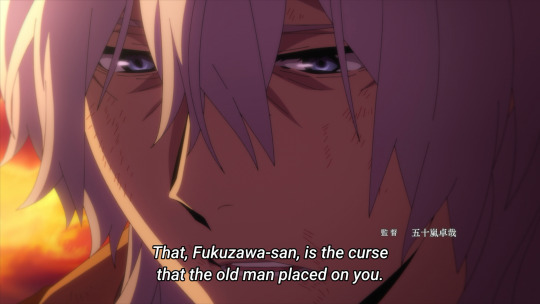
¹ In parenthesis I'm only bringing up the most notable indicators, but those doctrines are an underlying pattern of the whole manga and several events can lead back to these beliefs; for example, how Atsushi's abuse by the hand of the orphanage director is not morally condamned and even implied to have made him stronger, the emphasis on the great power of Japan (here emblematically represented by Yokohama) as a small country / city able to stand up against several evil foreign powers that make repeated attempts to destroy it, and more.
#Ah yes posting at 4am when the dash is dead and everyone is sure to see it#ōchi fukuchi#yukichi fukuzawa#bsd#bungou stray dogs#bsd analysis#mine
44 notes
·
View notes
Text

FROM THE ARTIST DIRECTORY
Between the Everyday and the Surreal
Minneapolis, Minnesota, USA. Bordering between the everyday and the surreal, JP Wenner uncovers the internalized struggles of daily life through the amalgamated images of his digital collages. What began as a passion for the experimental realms of film evolved into a desire to reconceive the way we perceive the world around us through images. With a keen eye and instinctual hand, he began manipulating fragmented images, people, places, and objects in an organic manner. Similar to the sensation when the pieces of a puzzle perfectly interlock, he masterfully arranges his compositions until they reveal a feeling of cohesion. Read More
*****************************
Kolaj Magazine, a full color, print magazine, exists to show how the world of collage is rich, layered, and thick with complexity. By remixing history and culture, collage artists forge new thinking. To understand collage is to reshape one's thinking of art history and redefine the canon of visual culture that informs the present.
SUBSCRIBE | CURRENT ISSUE | GET A COPY
SIGN UP TO GET EMAILS
#collage#collage art#collage artist#art#artist#contemporary art#modern art#fine art#artist portfolio#contemporary artist
13 notes
·
View notes
Text
La sagesse de l'herbe
Être là, enfin. Au présent. Quand s’abolissent les frontières qui me séparent du monde. Quand reflue ma conscience, ne laissant que l’instant jaillir comme une source. Être là comme un brin d’herbe parmi les autres brins d’herbe, malmené par l’hiver, bruni par la neige, secoué par le vent. Être là, sans plus de quand ni de pourquoi. M’échapper à moi-même. * Il n’est pas forcément nécessaire…

View On WordPress
#Anne Le Maître#être#bblog#expérence#nouvelles#présent#reconcer aux attributs#sagesse#sans but#Vivre
0 notes
Text
The title card that opens 1979’s original Mad Max places the action in a very near future, looming just “a few years from now.” George Miller’s cult action-thriller captured the edginess of a world teetering on the brink. The film depicts a not-quite-postapocalyptic Australia, where gangs of high-octane galoots rove the roadways on motorbikes and souped-up muscle cars, attempting to outrun the last of the lead-footed policemen: Mel Gibson’s Max Rockatanksy. Revisiting the film is exceptionally rewarding—and not just because of the grit, oddball humor, and verve of Miller’s directing. It reflects something of the ambient tensions of a world of potentially perilous fuel shortages, which threatened the whole petrol-and-plastic framework of our modern world.
Miller recalls this era with no particular fondness. He remembers, in the mid-’70s, all of the gas stations in Melbourne shutting down. Save for one. The mood was sour. The tension was thick. “It only took 10 days,” Miller says, “in this very peaceful, benign city for the first gunshot to be fired. Someone got ahead of a long queue, that went on city blocks, to get fuel. If that could happen in just 10 days, what would happen in 100 days?”
Across five films, including the new Furiosa: A Mad Max Saga, Miller’s franchise tracks this decline. In the original picture, the world is still fairly intact. There are diners and hospitals and happy families. People even dress more or less normally. It can feel a bit like our world: one which is collapsing but hasn’t yet totally buckled. By the time of 1982’s Mad Max 2 (released in the US as The Road Warrior), any vestiges of civilization have been blown away by an accelerated period of resource warring, nuclear conflict, and ecocide. Humanity survives in clans and roving bands, dressed in feathers and dusty leathers.
By 1985’s Mad Max: Beyond Thunderdome, civilization relies on bartering for commerce, harvesting pig shit for methane, and conflict resolution by way of gladiatorial combat. In the smash hit 2015 long-gap sequel, Mad Max: Fury Road (which recast Rockatanksy, putting Tom Hardy in the lead), things were almost cartoonishly bad: Fertile women were ferried across vast wastelands in tanker trucks, access to fresh water was hoarded by tyrannical dictators in skeleton half-masks, and all of humanity seemed to exist in a state of berserk, whooping madness. If that first film was warning—against the fetish for speed and power, against excessively extracting precious riches from a planet that could scarcely afford to give them up—the newer pictures feel not so much prescient as present: sado-comic visions of our own maddening, resource-starved world.
The Mad Max films are driven by a guiding incoherence. They offer a critique of car culture, resource scarcity, and the very things that may well have our world motoring toward its own demise, no matter how many EVs we buy. Denizens of the desolate wastelands exalt automobiles, motorbikes, engines, and especially gasoline as fetish objects. But at the same time, the films’ pleasures are guilty of this same exaltation. The thrills derive from high-octane racing, dangerous automobile maneuvers, body-mangling crashes, and the whole vroom-vroom of it all. They’re like war movies that ask us to thrill at the violence and daring of combat, while all the while muttering, “This is actually really awful, you know.” There is no effort to reconceive a world doomed by its pathological obsession with machines chugging on crude oil. Rather, the apocalyptic backdrop only furnishes fantasies of further decline.
Perhaps it’s a mistake to take films with characters called “Pig Killer,” “Rictus Erectus,” and “Pissboy” too seriously. But the Mad Max pictures underscore a deeper absurdity that undergirds the genre of postapocalyptic, ostensibly environmentalist (or at least environmentally sympathetic) entertainments that are often referred to as eco-fictions, or cli-fi, for “climate fiction.” “The climate crisis and grotesque climate inequalities are things that we are really struggling to process,” says Hunter Vaughan, an environmental media scholar at Cambridge University. “These films are touching on our collective inability to adapt to this crisis.”
Vaughan is the author of Hollywood’s Dirtiest Secret: The Hidden Environmental Cost of the Movies. His text analyzes the environmental impact of the film industry, from early Hollywood to the present. Understanding the industry as inherently (and devastatingly) resource-reliant, he has come to view the very idea of “environmentalist movies” as a bit of an absurdity. “Films like Mad Max and Avatar,” he explains, “are just doing what Hollywood has always done, which is rely on choreographed violence and the enticement of spectacle. But they get to offset that to some degree by coming across as having some sort of environmentalist message.”
The whole notion of “cli-fi” as a genre suggests something a bit ominous: that the well-meaning parables of early climate fiction have now become subservient to the demands of the genre. Take Denis Villeneuve’s Dune pictures. While perfectly competent as pricey pieces of blockbuster cinema, they barely engage with the novel’s ecological concerns. Author Frank Herbert was originally inspired by the historical ability of certain indigenous civilizations to live in harmony in even the harshest environments—a noble idea that, in the Hollywood version, takes a backseat to woolly ideas around interstellar jihad and the sheer pageantry of the proceedings. Likewise, Mad Max's original warning siren has waned a bit, as the films developed their own generic language. The collapsing world is now just a canvas across which (wildly entertaining) action scenes unfold.
However absurd it may seem to scholars, Miller seems to come by his environmentalist sympathies honestly. Even outside of the Mad Max movies, many of his pictures touch resonant themes about global warming (Happy Feet), vegetarianism (Babe and its sequel), and the essential destructiveness of the modern world (Three Thousand Years of Longing). These realities have directly impacted his films. Fury Road’s production was long delayed, in part, because the Australian desert where Miller planned to film was suddenly swamped—a direct result of unpredictable climate patterns. “I see it myself,” the director says of climate change. “It’s all around us. I’ve seen both the hard statistics, and just in my own experience. So it can’t help but seep into the story.”
Furiosa is unique among the Mad Max films in that it offers an alternative to the arid, violent, boiling wastelands that dominate the franchise’s topography. The origin story of Charlize Theron’s fierce road warrior from Fury Road, the film opens in “the Green Place”: an Edenic garden governed by a tribe of warrior-women, which stands out as a lush oasis in the desert. For Miller, Furiosa offered an opportunity to one-up himself. Fury Road proved he could make a hit Mad Max movie without Mel Gibson. Now, he hopes to show he can make another without Max (though he does appear, very briefly). “If you just do the same thing again and again, there’s hardly any point,” he says. “There’s an inherent cynicism to it.”
Snatched from safety, Furiosa (played by Ayla Browne as a child and Anya Taylor-Joy as an adult) is raised among a motorcycle death cult, led by the madman-prophet Dementus (Chris Hemsworth, sporting an impressive prosthetic schnoz). In time, she’s traded away to Immortan Joe, Fury Road’s big bad, and learns to survive and thrive among his clan of face-painted, aerosol-huffing cultists. Building out the world of Fury Road, Furiosa traces the fragile trade dynamics between three strongman leaders, each hoarding a key resource: fresh water, fuel, and bullets. As Furiosa navigates these violent trade routes, she hatches her own plan to avenge herself on Dementus and burn rubber back to the Green Place.
In actually bothering to imagine what some alternative to the wasteland might look like, Furiosa moves past the typically narrow horizons of most cli-fi. Nicole Seymour, who teaches environmental literature at California State University, Fullerton, notes that most environmentalist narratives stop short of actually conceiving of what a new, better world might look like. “I think that would require you to do more implicating, and more work,” she says, “which no one wants to do.” She notes that most utopian environmentalist literature tends to buck the mainstream, foregrounding more diverse characters. “Do they want to make a movie about a Puerto Rican transgender person who time-travels?” she asks. “I would watch that!”
There’s a shopworn quote attributed to the late critic and theorist Mark Fisher, about how “it's easier to imagine the end of the world than the end of capitalism.” Certainly, in the Mad Max movies, the basic systems that led to our destruction—resource hoarding, the primacy of tribal violence, the fetish for power and speed—remain intact. The sinister logic imparted to the audience is that, well, ecocide is inevitable, and so there’s little left to do than revel, laughing mad, in the explosive spectacle of our own destruction. To which an admirer of these films (like this writer) may sensibly, or cynically, respond: OK, sure … but what a spectacle.
For his part, Miller maintains that there’s a deep humanism at the core of these films, buried beneath the scrap heaps of twisted metal. “I’ve been to places where there is a lot of trauma and poverty,” he says. “I’m always impressed by the ability for survival. This is about our survival.”
15 notes
·
View notes
Text
"The change with Melissa not going into the spin-off happened pretty late in the game. So we'd always planned that the two of them were going to ride off together. In the original version, they would've gone on the bike and pointed west and then would've gotten sidetracked. And then when we were running the finale, we were like, 'Okay, let's reconceive how they end.' So it becomes, he rides off, and she's there to support him because there's no anger or anything between them about it. It's just he's going to go off on a mission, and she has a different mission right now."
Angela Kang, Entertainment Weekly

11 notes
·
View notes
Note
For the fic writers ask meme: 17 and/or 37
Thanks for the asks, @the-surreptitious-albatross , and sorry it has taken me some time to respond!
17. Do you write your story from start to finish, or do you write the scenes out of order?
I usually write the scenes in order, from start to finish. The closest I come to doing things out of order is that sometimes I will jump ahead and do a detailed outline of a later chapter if I think of ways I want it to be in conversation with an earlier one (eg. if there are interesting parallelism, or thematic commonalities), and often my outlines start with bullet points and then end up basically being very rough drafts, complete with pages of dialogue and the emotional beats or notes on where to add descriptions. And I guess with my current long MLC fic, I wrote a few drafts of the first few chapters, then did 15k of outlines/incredibly rough drafts for later chapters, and then the other day realized what was bugging me about how I had written the first chapter, so I went back and completely rewrote it. So I guess in that regard, I jump around, because I might go back and totally reconceive of a chapter based on something I want to do with character development later. (This is why I don’t post fics on AO3 until they’re done; I do a truly absurd amount of rewriting.)
37: Talk about your current wips.
I’m honored that you want to hear about it! I actually have 4 for Mysterious Lotus Casebook fics (3 with absurdly detailed outlines, but only one that I’m actively drafting), so for now, I’ll just talk about the one I’ve worked the most on.
Post-canon (OT3) Beach fic:
tw/cw: suicide attempt, off-page non-consensual medical procedure
When Li Lianhua’s shiniang tried and failed to sacrifice herself to save Li Lianhua against his will, he fled to the Donghai beach, intending to die before she could catch up with him because he can’t endure the idea that someone else he cared about might die for him. Di Feisheng and Fang Duobing find him first and save his life for the moment, but are horrified to discover the truth that Li Lianhua can’t lie his way out of: that the damage from the survivor’s guilt of everything he’s been through is just as dangerous as the damage from Bicha poisoning. With each of them reeling from the traumas of the past year (Li Lianhua from Shan Gudao’s betrayal and now medical PTSD from his shiniang’s procedure, Fang Duobing from almost losing Li Lianhua and being terrified to let him out of his sight in case he goes straight back to the water, and Di Feisheng from the abuse at the hands of Jiao Liqiao), they have to figure out how to face everything they pushed aside to save the country, and in the process, learn that the hardest battles aren’t fought with swords.
To read an excerpt, follow this link: (x)
I was going to write up synopses for the others, but I’m out of energy (and don’t want to sit on this ask for another week or so to write them out), so I’ll just do quick teaser/keyword summaries for the others:
Missing Scene Fic: Di Feisheng’s first night in Lotus Tower (featuring him finding the Yinzhou armor being used as a potholder, his feelings on having his meridians and qi blocked, and helping LLH after a nightmare so it doesn’t wake up FDB and give away his identity.)
Pre-Canon: Yinzhou armor backstory, Sigu sect waterfall spars, and LXY/DFS first time; set the evening after Shan Gudao resigned from the Sigu Sect
5+1: FDB and DFS sharing the Lotus Tower guest bed (from FDB’s POV, covering the entire show + post canon)
10 notes
·
View notes
Text
Nicolas Cage testing the Superman costume (1997)
Kevin Smith, whose scripted was titled Superman Lives, suggested Tim Burton to direct the film & Burton signed on with a pay-or-play contract of $5 million. Nicolas Cage, a comic book fan, signed on as Superman with a $20 million pay-or-play contract, believing he could "reconceive the character". Burton said Cage's casting would be "the first time you would believe that nobody could recognize Clark Kent as Superman, Cage could physically change his persona"
In April 1998, Warner Bros ultimately chose to put the film on hold.
12 notes
·
View notes
Text
Letters to Emily - Chapter 6:
"Thank you for the tea, Sera."
"Of course. It is nice to have these moments with you. Now then, you were ready to move onto the next letter?"
Eyes lighting up, Emily eagerly grabbed the next letter to read. She was so happy that Sera was taking an interest in this now. "Let's see here... Oh! Well, Adam seems to be settling to the hotel okay. But it says he keeps getting into fights with Charlie's business partner over... Lucifer's attention? Huh. I wonder why."
Sera was mid-sip when she heard that. Coughing, tea had gone everywhere in her shock. Her cup lay forgotten on the ground as she tried to reassure Emily that she was okay and clean herself up. How and why did this always happen with Lucifer?
Up in Heaven he had angels fighting over him and it only got worse once he stepped foot in Eden. She could still recall the exact moment that Adam and Lilith decided that instead of sharing the Archangel they wanted him all to themselves. That decision doomed both relationships from the start. Sighing, Sera rubbed her temples. She could already feel the headache forming.
"Yes. That indeed tracks..."
~
"Gabriel. Are you sure about this?"
"Yes." Sliding the box over to Michael, he tried to keep his anger under control. How could she do this? Completely cutting Lucifer off from them. Sure, the fall had been horrible and left them all with trauma. Lucifer more than anyone else.
But how were they supposed to heal and reconceal if they were cut off from communicating? It was obvious from the number of letters from the fallen angel that he had wanted that. Or at the least to keep them updated on his life even if he hated them.
"Were you able to break the seal?"
"Not yet. I believe this is more in your area of expertise, brother."
"Very well." Before Michael could reach out for the box, the doors to the meeting room burst open, a distraught looking Sera hurried into the room. "What is the meaning of this?"
"It's Lucifer. He's been badly injured by some of the other angels."
< Previous
Next >
2 notes
·
View notes
Text
Visual Culture & Political Art : Angela Davis as an Afrofuturistic Icon
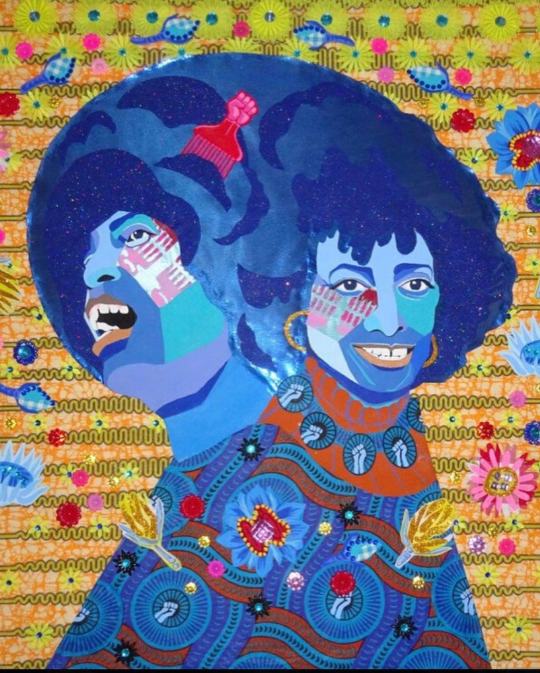
"Our Queen" by Erin LeAnn Mitchell
Angela Davis, an influential figure in civil rights and feminism, transcends conventional narratives as an Afrofuturistic icon, reshaping cultural perceptions through the dynamic interplay of visual culture and political art. Her iconic image, characterized by the defiant afro hairstyle and raised fist, becomes a symbol of resistance and empowerment within the framework of Afrofuturism. Angela Davis's visual representation, particularly in Erin LeAnn Mitchell's "Our Queen," extends beyond aesthetics, embodying the core vibe of Afrofuturism. It further delves into the intersection of visual culture and political art, highlighting Davis's role in challenging historical norms and envisioning a future where identity and culture are redefined on individual terms.

Afrofuturism, a cultural and artistic movement, combines elements of science fiction, speculative fiction, and fantasy to explore themes such as identity, culture, and liberation. It serves as a vehicle for political imagination, enabling marginalized communities to envision and create alternative realities. Erin LeAnn Mitchell's "Our Queen" exemplifies the evolution of Afrofuturist art, emphasizing empowerment and identity for black women and portraying Angela Davis at different stages as a metamorphosis over time. Afrofuturism celebrates the diversity of black experiences, challenging monolithic portrayals of blackness and embracing a multicultural perspective. Erin Mitchell's art challenges the portrayal of blackness by incorporating vibrant colors that represent spiritual elements and multi-layered comfort. Angela Davis, as a global and multicultural icon, signifies liberation for women of color across various cultures.
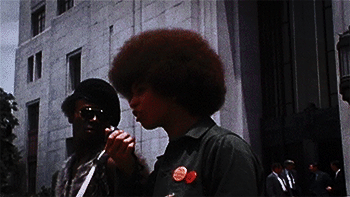
Beyond being an Afrofuturist icon, Angela Davis disrupts traditional beauty standards and advocates for the liberation of black women. Her image as a political prisoner turned professor, author, and public intellectual symbolizes liberation for all. The iconic raised fist signifies resistance and solidarity, turning her image into a form of political art that transcends mere representation. Davis's image defies binary oppositions, encouraging the blurring of boundaries and a more inclusive future. The representation of Angela Davis's body in Afrofuturist art challenges historical and societal norms. In "Seeing Differently" by Amelia Jones, the concept of "Bodies on Display" is explored, highlighting how visual culture can redefine societal perceptions of the body. Davis, through Afrofuturist art, represents a woman with agency over her own body, challenging the commodification of black bodies and influencing the visual culture discourse.
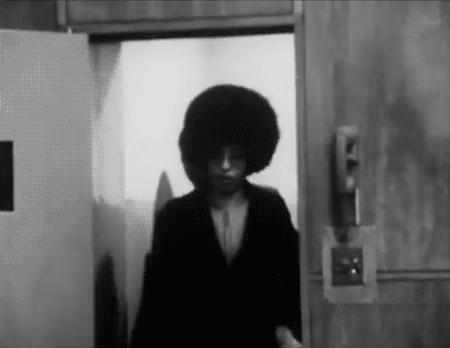
Angela Davis's Afrofuturistic representation reconceives difference by challenging stereotypical portrayals of women of color. Angela Davis's visual representation is inseparable from her involvement in various political movements. From her early activism in the Black Panther Party to her fight against systemic racism and mass incarceration, Davis's iconography displays the spirit of resistance and the pursuit of justice. Mitchell's artwork captures the duality of Davis's political journey, from the young, vital activist with the raised fist to the wise and peaceful intellectual, symbolizing the multifaceted nature of her contributions to political movements. In the context of visual culture, the notion of "Seeing Differently" is central to understanding how Afrofuturism provides an alternative perspective. Afrofuturism invites viewers to see beyond conventional norms, envisioning a future where difference is celebrated rather than marginalized.
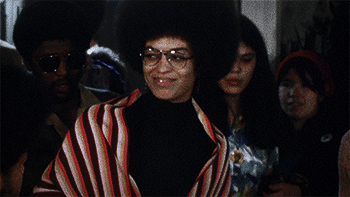
Angela Davis's iconography becomes a crucial component in the visual history of Afrofuturism, where identity is not confined by external expectations but defined by one's own terms. In "Seeing Differently," Amelia Jones theorizes the relationship between identity and visual history, emphasizing how visual representations contribute to the construction of identity. Davis's evolution from political prisoner to iconic Afrofuturist figure represents a dynamic shift in visual history, challenging preconceived notions and inspiring new narratives. The feminist slogan "The personal is political" resonates strongly in Angela Davis's image and artworks like "Our Queen." Davis's personal journey, from incarceration to academic prominence, is intrinsically tied to her political activism. The Afrofuturistic representation of Davis as a queen signifies not only personal triumph but also a collective political statement. Mitchell's artwork encapsulates the personal and political dimensions, illustrating how Davis's identity and visual representation contribute to broader societal change.
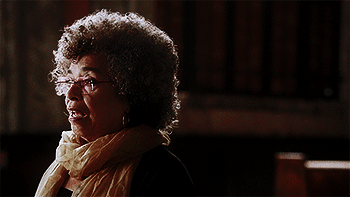
Davis's Afrofuturistic iconography stands at the intersection of visual culture and political art, challenging historical norms and influencing contemporary discourse. Visual culture, as an essential aspect of Afrofuturism, becomes a tool for political expression and reclamation. Davis's image, whether as a professor, activist, or global icon, embodies the transformative potential of visual culture in shaping societal perceptions and advocating for political change. Angela Davis emerges as a powerful Afrofuturistic icon, navigating the realms of visual culture and political art to challenge historical norms and envision a future where identity and culture are redefined on individual terms. Through her iconic image and Mitchell's Afrofuturist artwork, Davis becomes a symbol of resistance, empowerment, and inclusivity. Afrofuturism, with Davis at its forefront, invites a reevaluation of visual culture's role in political expression, paving the way for a more dynamic and inclusive cultural narrative. The concept of worldview, as discussed by Amelia Jones in "Seeing Differently," adds another layer to the Afrofuturistic exploration. Davis's visual representation, both in her iconic images and Mitchell's artwork, offers a distinct world view that challenges and expands societal perspectives. Afrofuturism, with Davis at its forefront, becomes a lens through which alternative worldviews are explored, emphasizing the importance of diverse narratives and challenging the dominant culture.
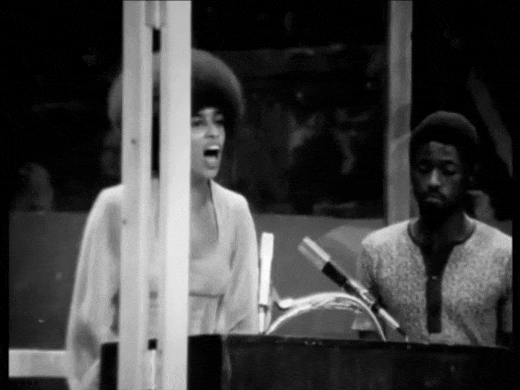
References:
Jones, Amelia. Seeing Differently. https://www.amazon.com/Seeing-Differently-History-Theory-Identification/dp/0415543835
"Afrofuturism and Its Possibility of Elsewhere: The Power of Political Imagination." The Conversation, https://theconversation.com/afrofuturism-and-its-possibility-of-elsewhere-the-power-of-political-imagination-166002.
"Wearing My Afro: Always a Political Act." The New Republic, https://newrepublic.com/article/122515/wearing-my-afro-always-political-act
"Afrofuturism: How Black Creatives Point to a Brighter Future." Domestika, https://www.domestika.org/en/blog/6930-afrofuturism-how-black-creatives-point-to-a-brighter-future
"Afrofuturism." UCLA Newsroom, https://newsroom.ucla.edu/magazine/afrofuturism.
"Artist Profile: Erin LeAnn Mitchell." Ruckus Journal, https://ruckusjournal.org/Artist-Profile-Erin-LeAnn-Mitchellh.
"Our Queen" by Erin LeAnn Mitchell, National Museum of African American History and Culture, https://nmaahc.si.edu/object/nmaahc_2010.55.2.

2 notes
·
View notes
Text
Free Sam Vaknin Seminar in Zagreb
The Power of Intention Center organizes a free seminar by Professor Sam Vaknin. More details below, and you can sign up on this link: https://snaganamjere.com/sam-vaknin/
LECTURER
Sam Vaknin, PhD
Professor of Clinical Psychology and Management Studies in CIAPS (Commonwealth Institute of Advanced Professional Studies), Cambridge and Birmingham, UK; Ontario, Canada; and Lagos, Nigeria;
Visiting Professor Of Psychology and of Economics in South East European University (SEEU), North Macedonia
Former Visiting Professor of Psychology, Southern Federal University, Rostov-on-Don, Russia (2017-22).
SEMINAR
Cost: FREE
Length: 7 hours with 4 breaks of 15 minutes each.
Title: “Cluster B Personality Disorders: Recent Advances in Diagnosis and Treatment”
Audience: organized by Intention Power Center
Venue: Hotel "Antunović", Zagreb, 102 Zagreb Avenue, Croatia
Timing: 8th December 2024, 10.00 a.m.- 5.00 p.m.
Language: English (no translation)
Synopsis:
The field of personality disorders is at an impasse, reflected in the competing diagnostic models in the DSM 5-TR (the categorical lists of diagnostic criteria imported verbatim from the DSM-IV-TR vs. the dimensional, descriptive alternative models, relegated to the appendices).
We need to reconceive of cluster B personality disorders as post-traumatic dissociative conditions involving self-states (subpersonalities with pseudoidentities). This seems to be the most clinically rigorous way to rid ourselves of excessive comorbidities and polythetic diagnoses.
Recasting cluster B personality disorders as post-traumatic conditions which involve dissociation goes a long way towards resolving these outstanding conundrums and provides for hitherto absent efficacious treatment modalities.
0 notes
Text
2 Corinthians 5:18 KJV
[18] And all things are of God, who hath reconciled us to himself by Jesus Christ, and hath given to us the ministry of reconciliation;
0 notes
Text
0 notes
Text
Literary studies are being transformed today by the expansive and disruptive forces of globalization. More works than ever circulate worldwide in English and in translation, and even national traditions are increasingly seen in transnational terms. To encompass this expanding literary universe, scholars and teachers need to increase their linguistic and cultural resources, rethink their methods and training, and reconceive the place of literature and criticism in the world. In Comparing the Literatures, David Damrosch integrates comparative, postcolonial, and world-literary perspectives to offer a comprehensive overview of comparative studies and its prospects in a time of great upheaval and great opportunity.
Comparing the Literatures looks both at institutional forces and at key episodes in the life and work of comparatists who have struggled to define and redefine the terms of literary analysis over the past two centuries, from Johann Gottfried Herder and Germaine de Staël to Edward Said, Gayatri Spivak, Franco Moretti, and Emily Apter. With literary examples ranging from Ovid and Kalidasa to James Joyce, Yoko Tawada, and the internet artists Young-Hae Chang Heavy Industries, Damrosch shows how the main strands of comparison—philology, literary theory, colonial and postcolonial studies, and the study of world literature—have long been intertwined. A deeper understanding of comparative literature’s achievements, persistent contradictions, and even failures can help comparatists in literature and other fields develop creative responses to today’s most important questions and debates.
Amid a multitude of challenges and new possibilities for comparative literature, Comparing the Literatures provides an important road map for the discipline’s revitalization.
11 notes
·
View notes